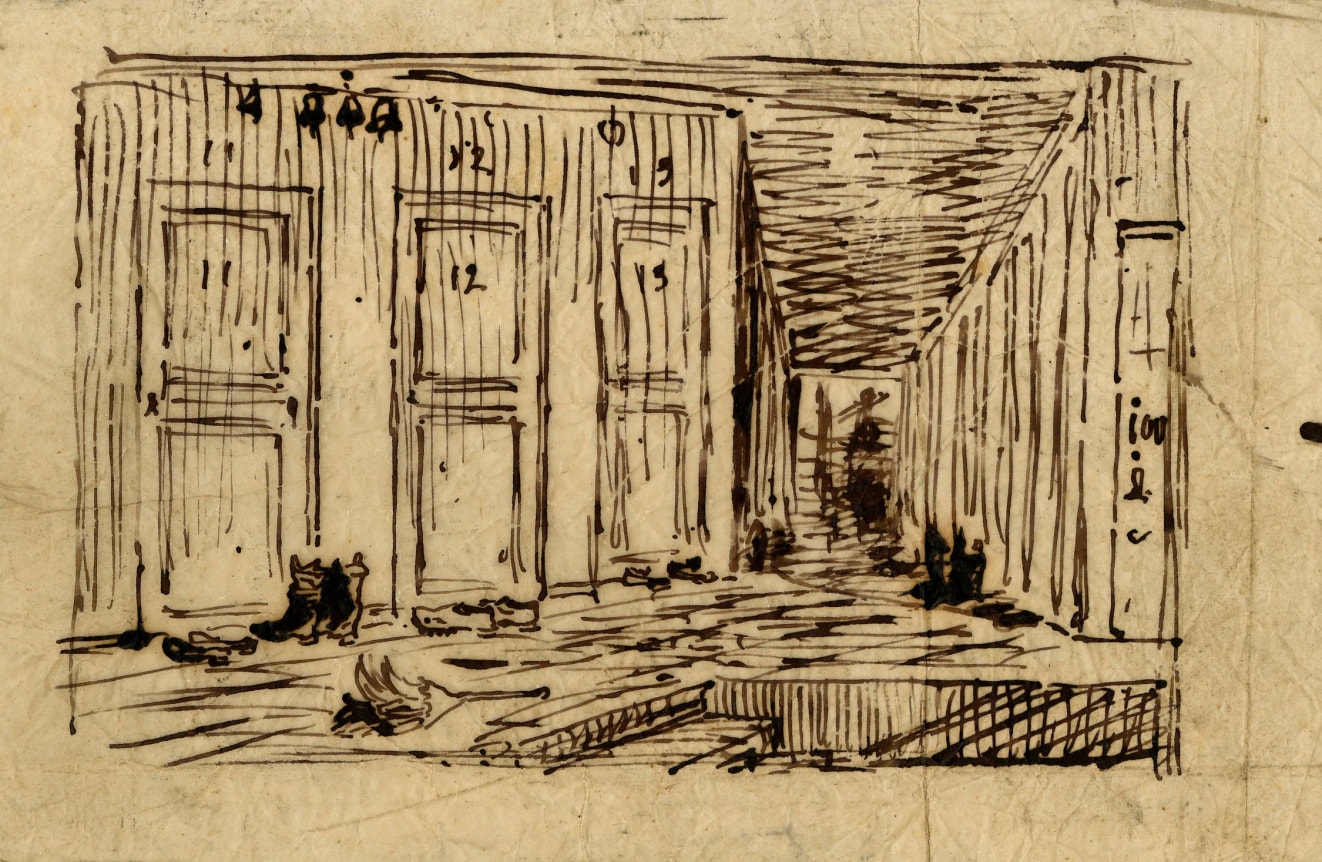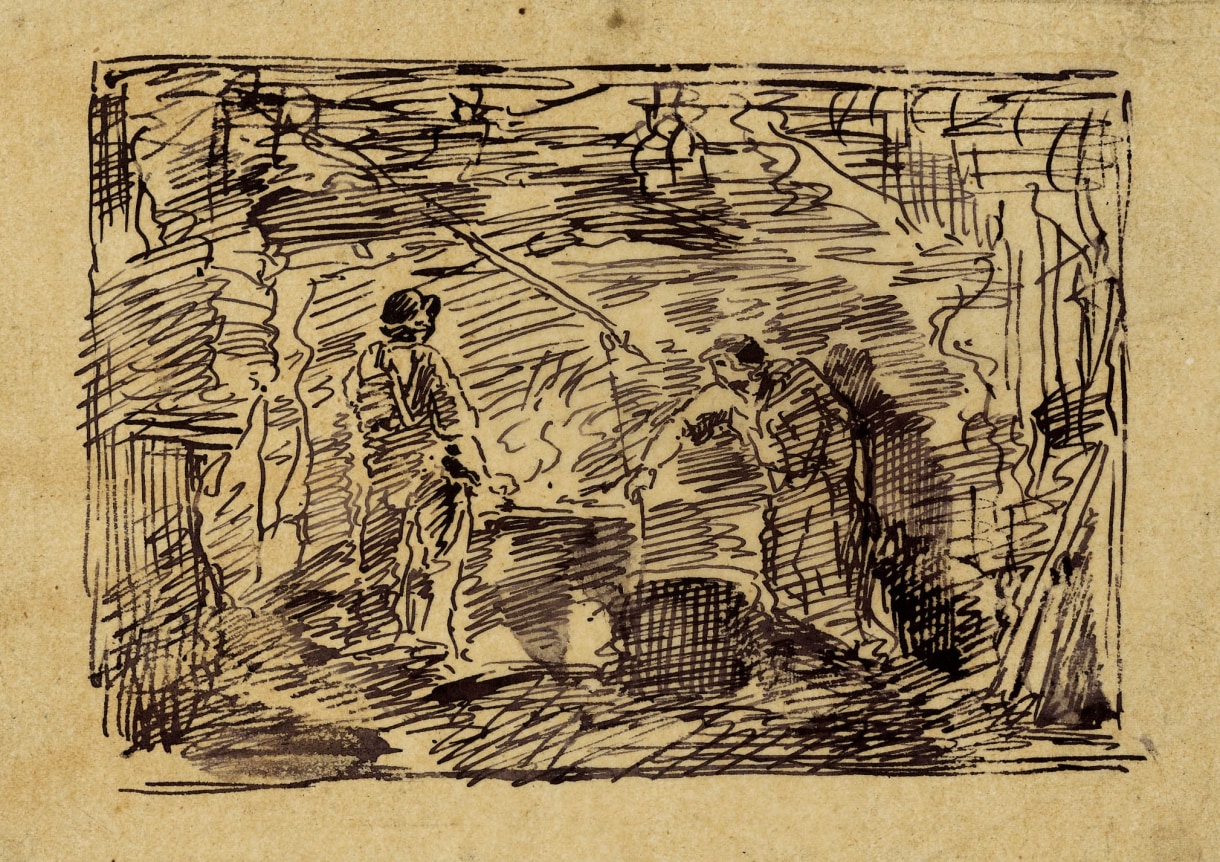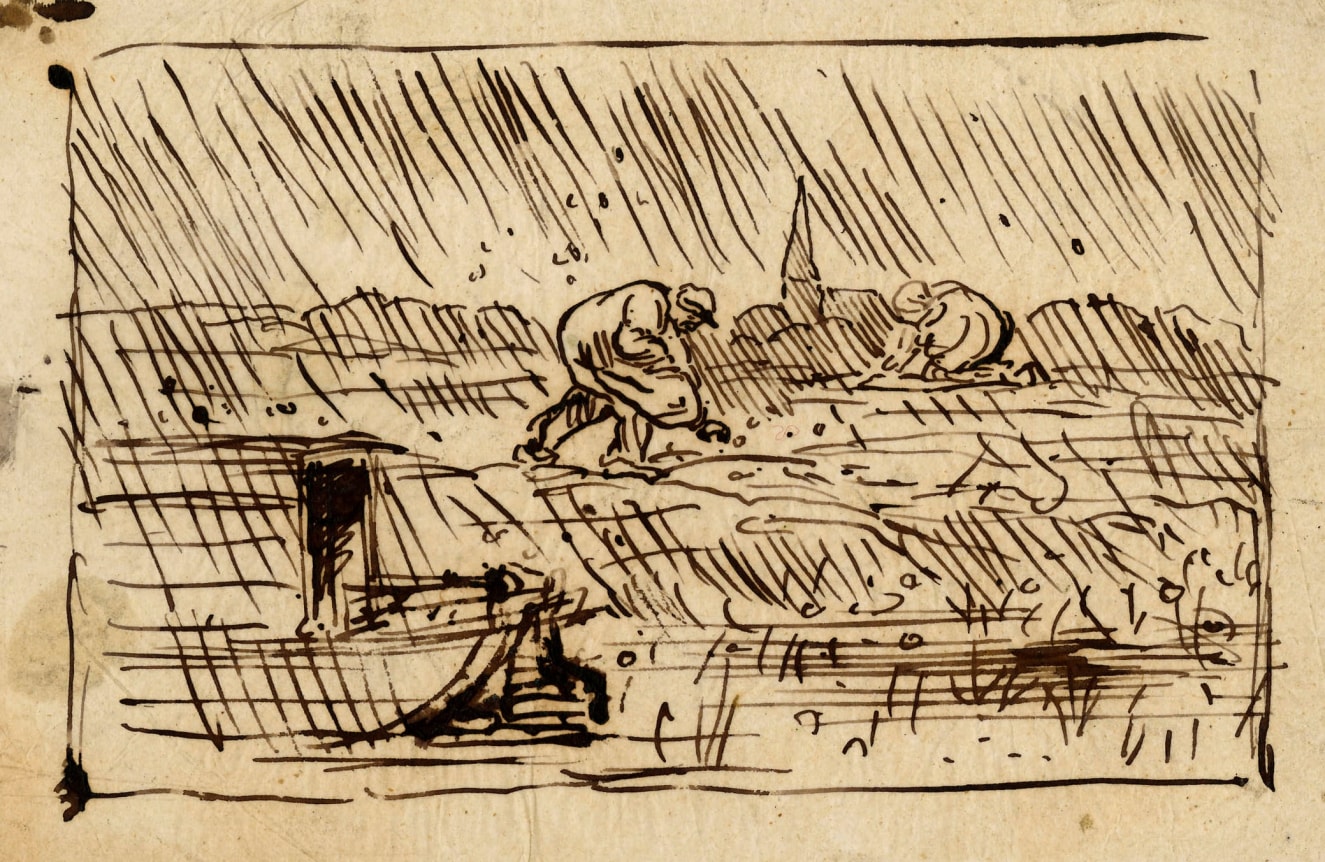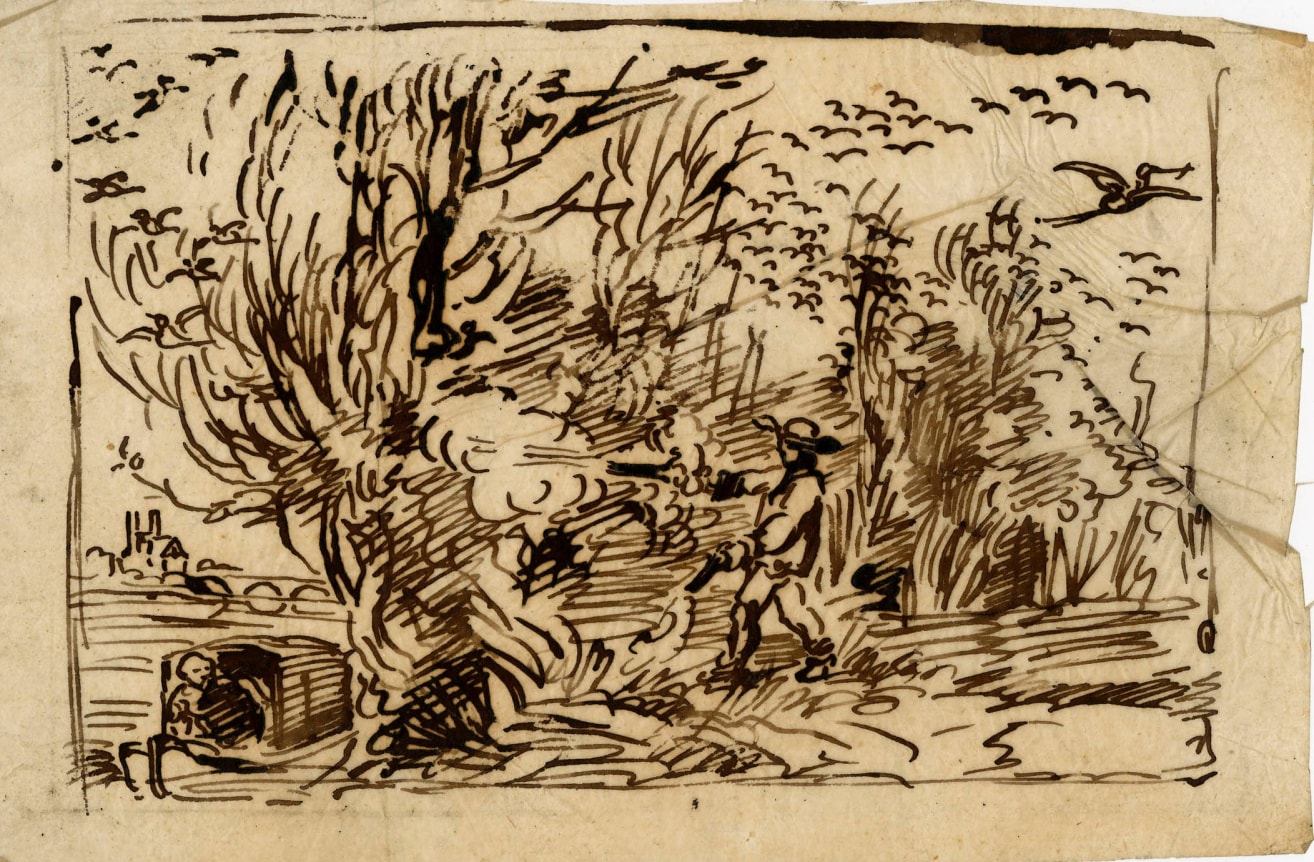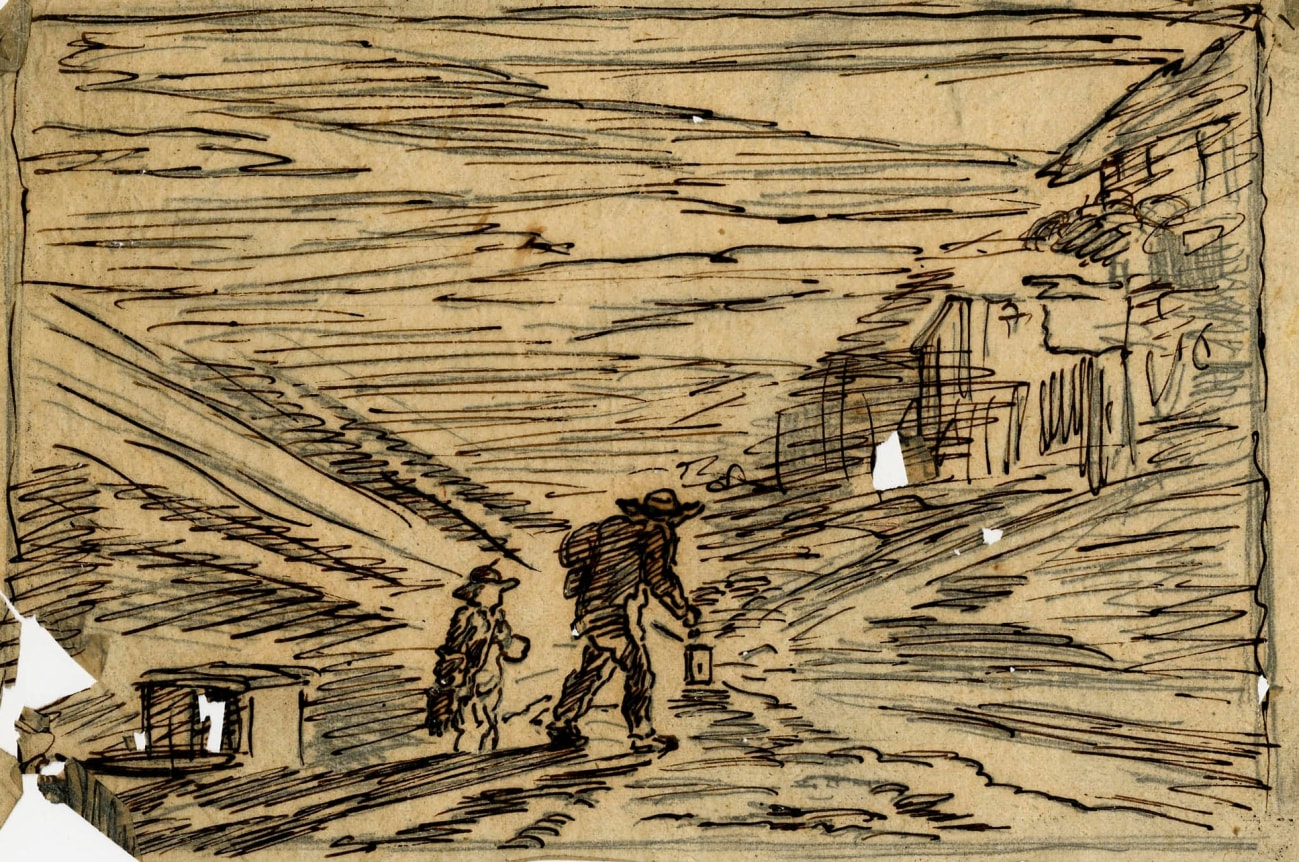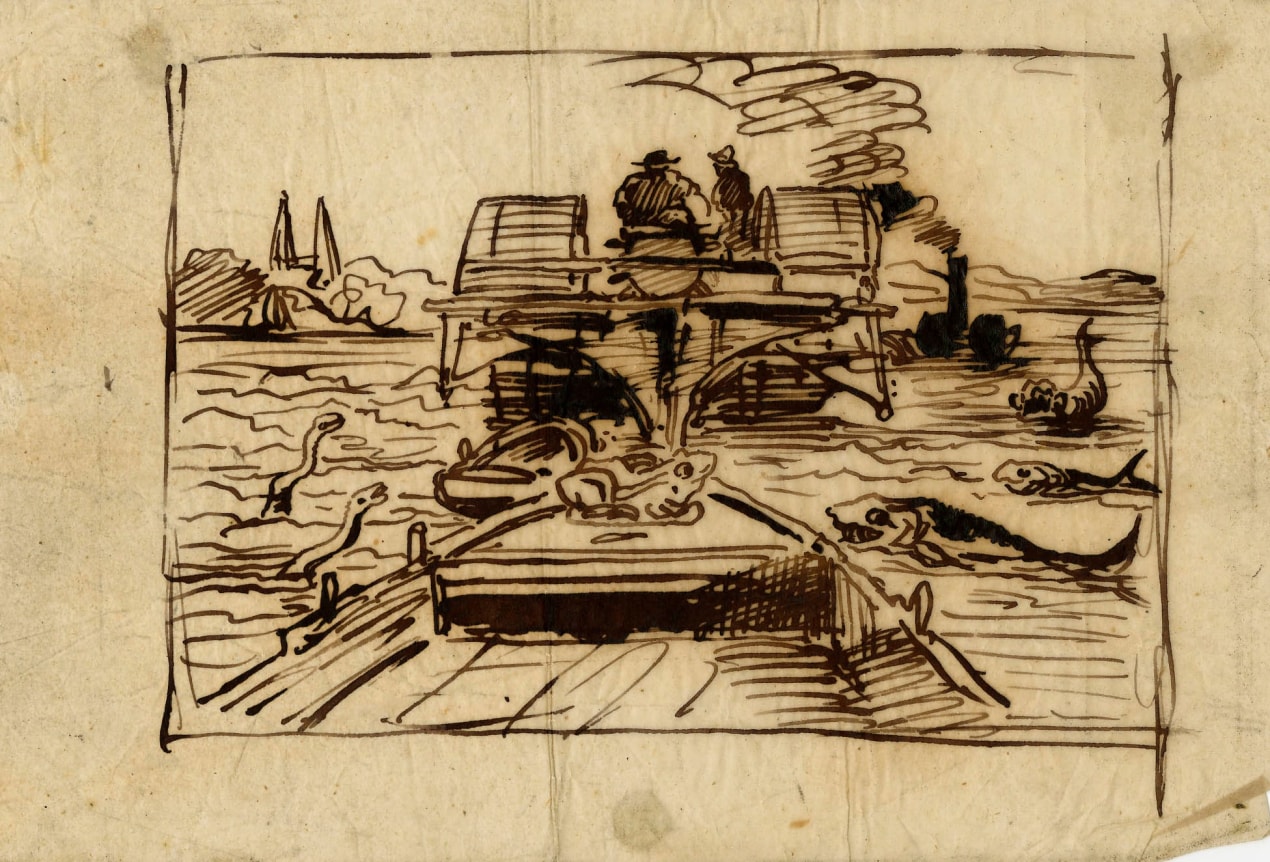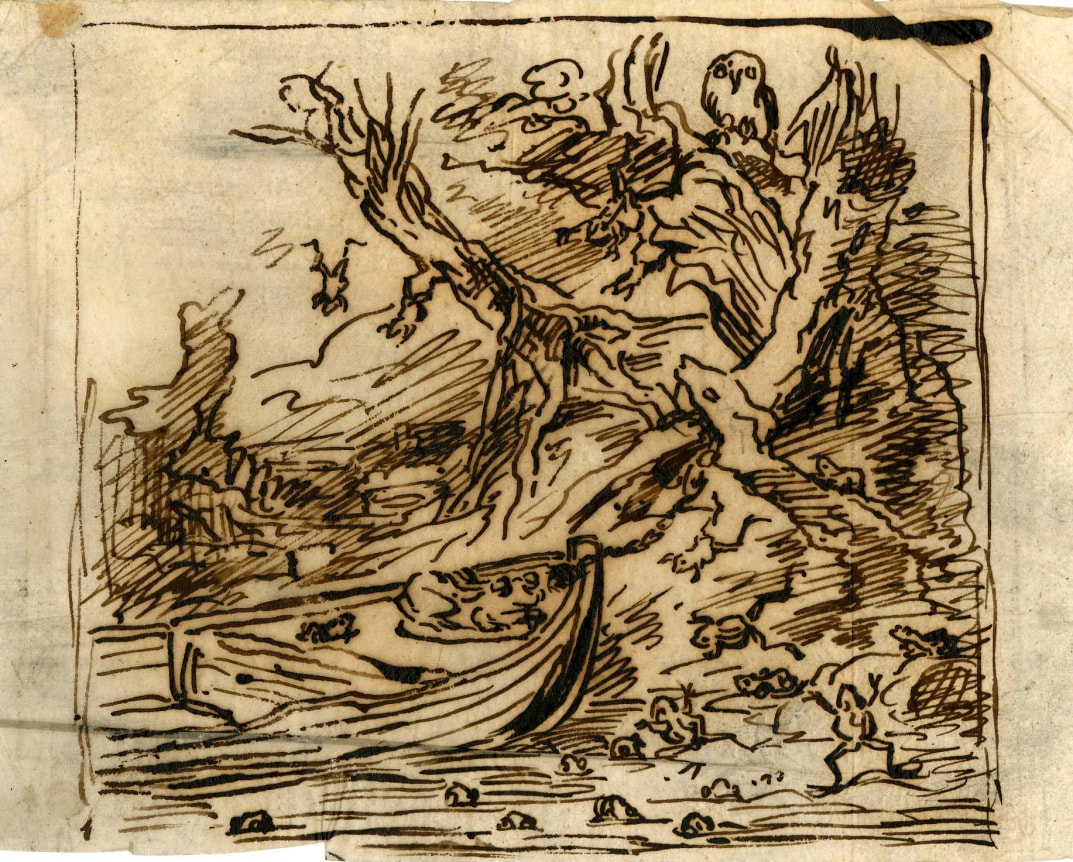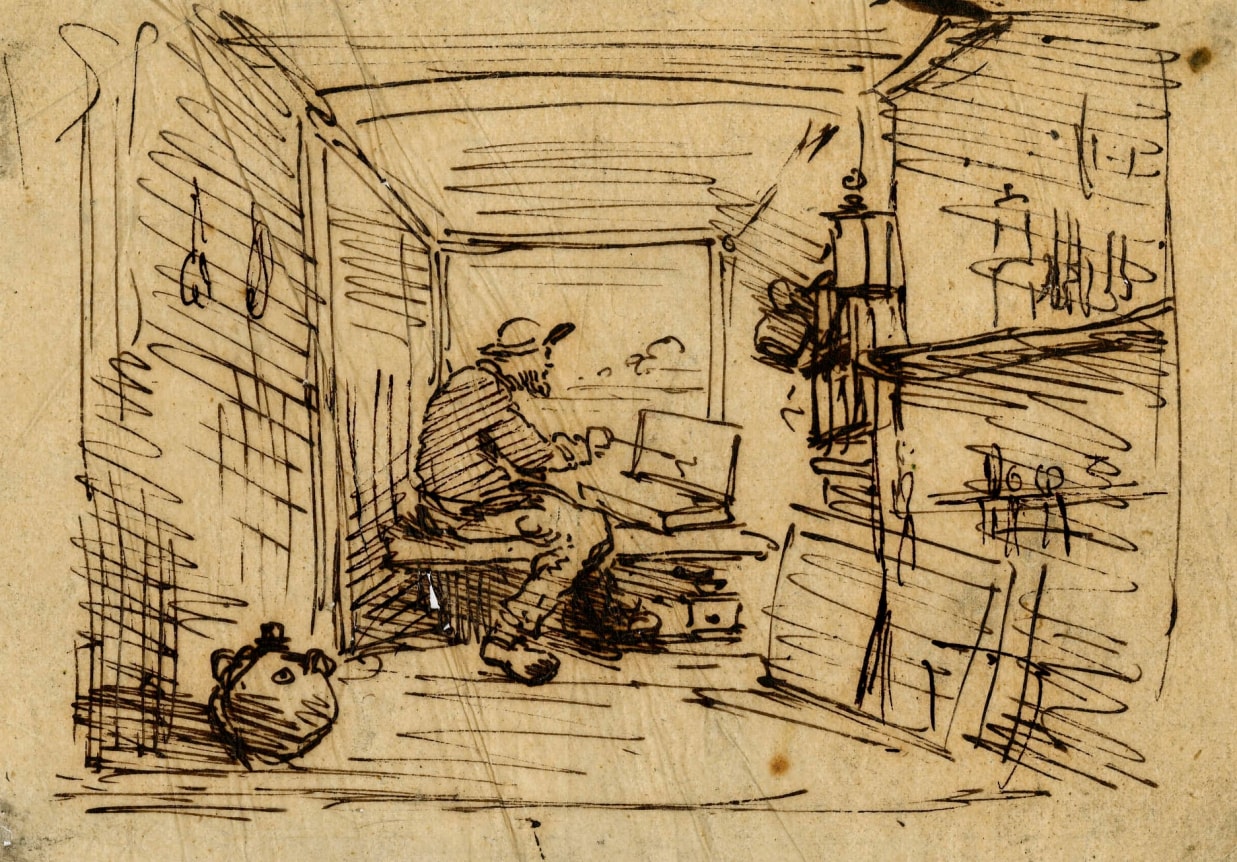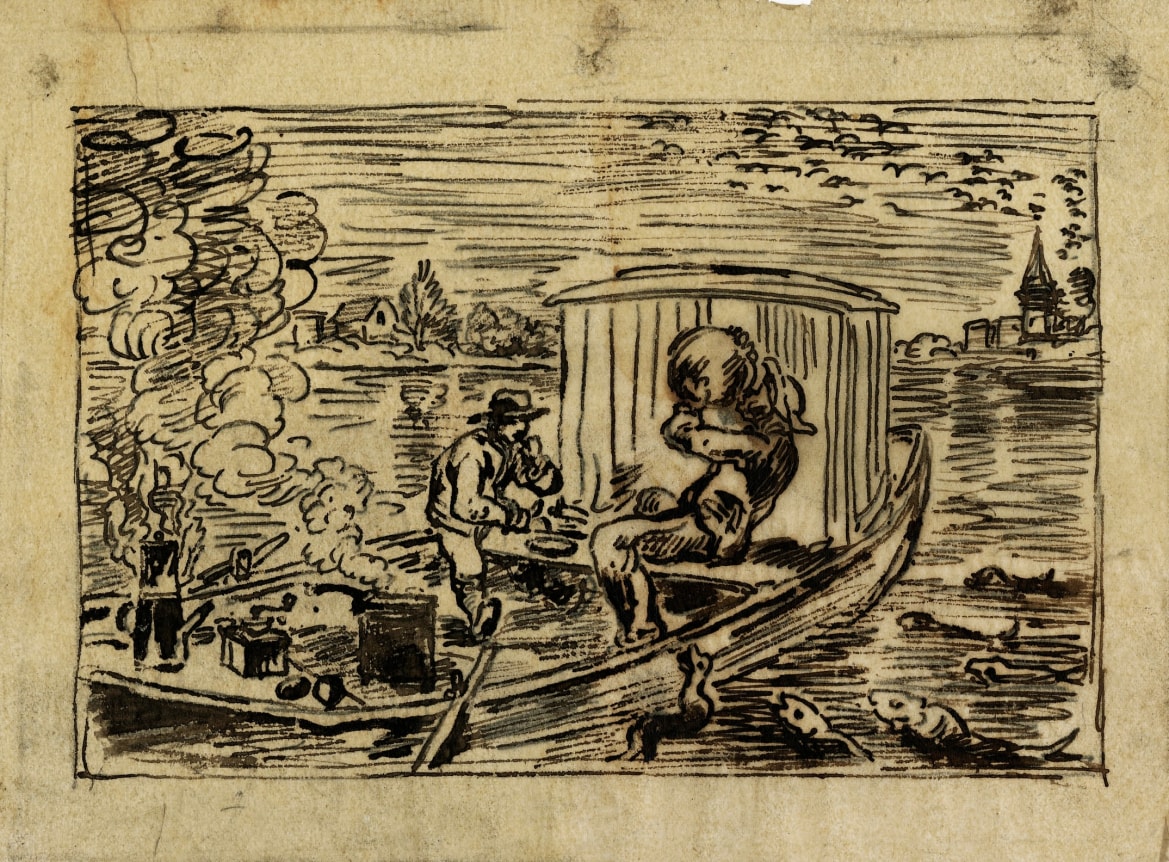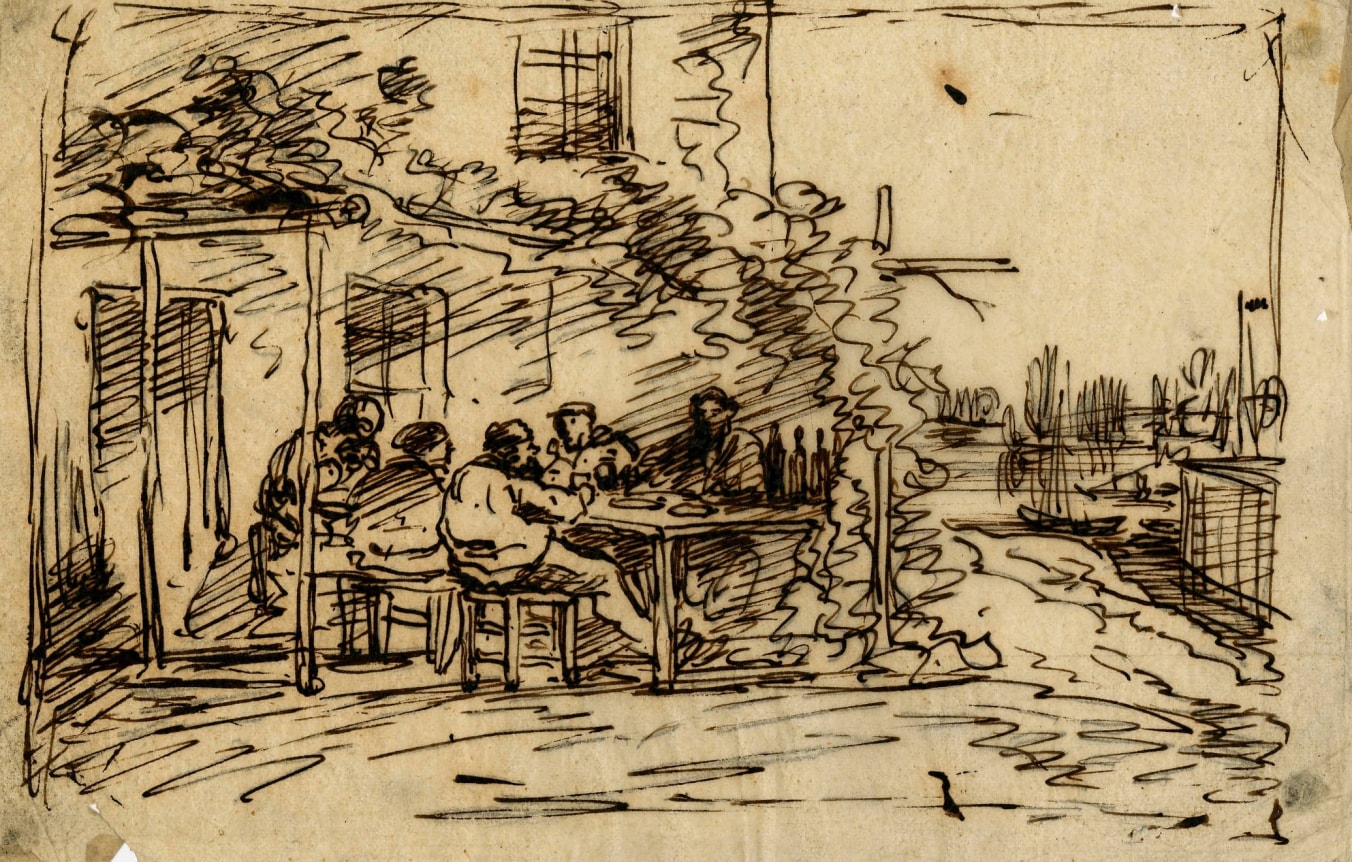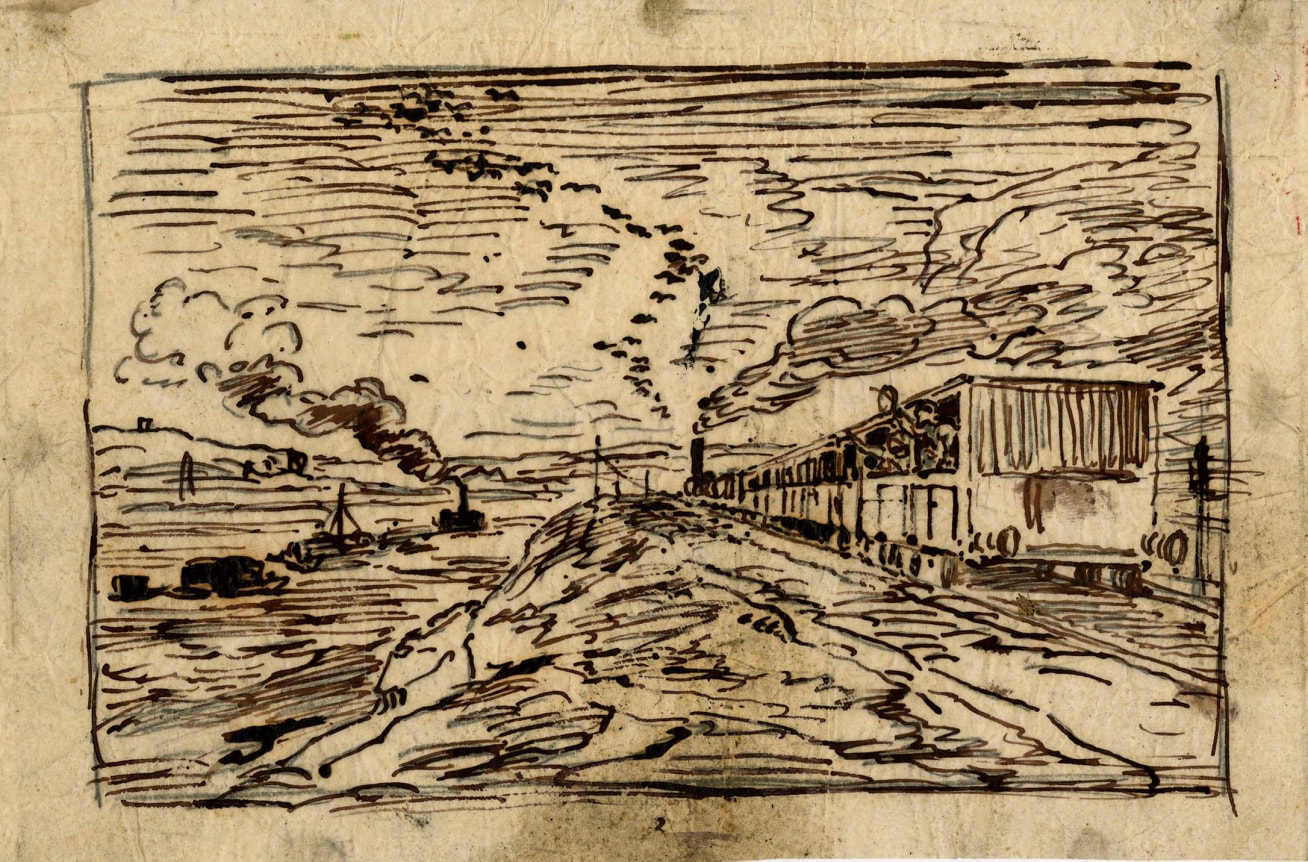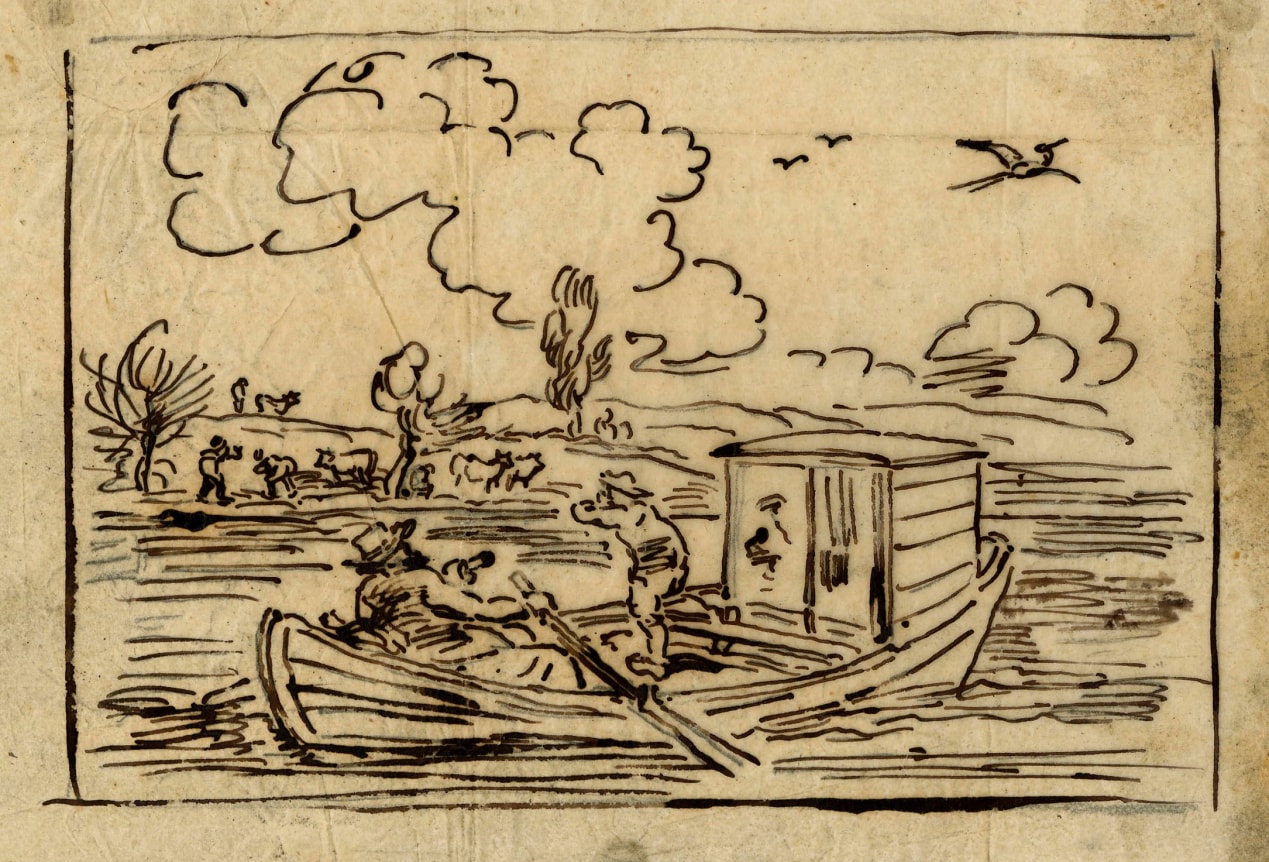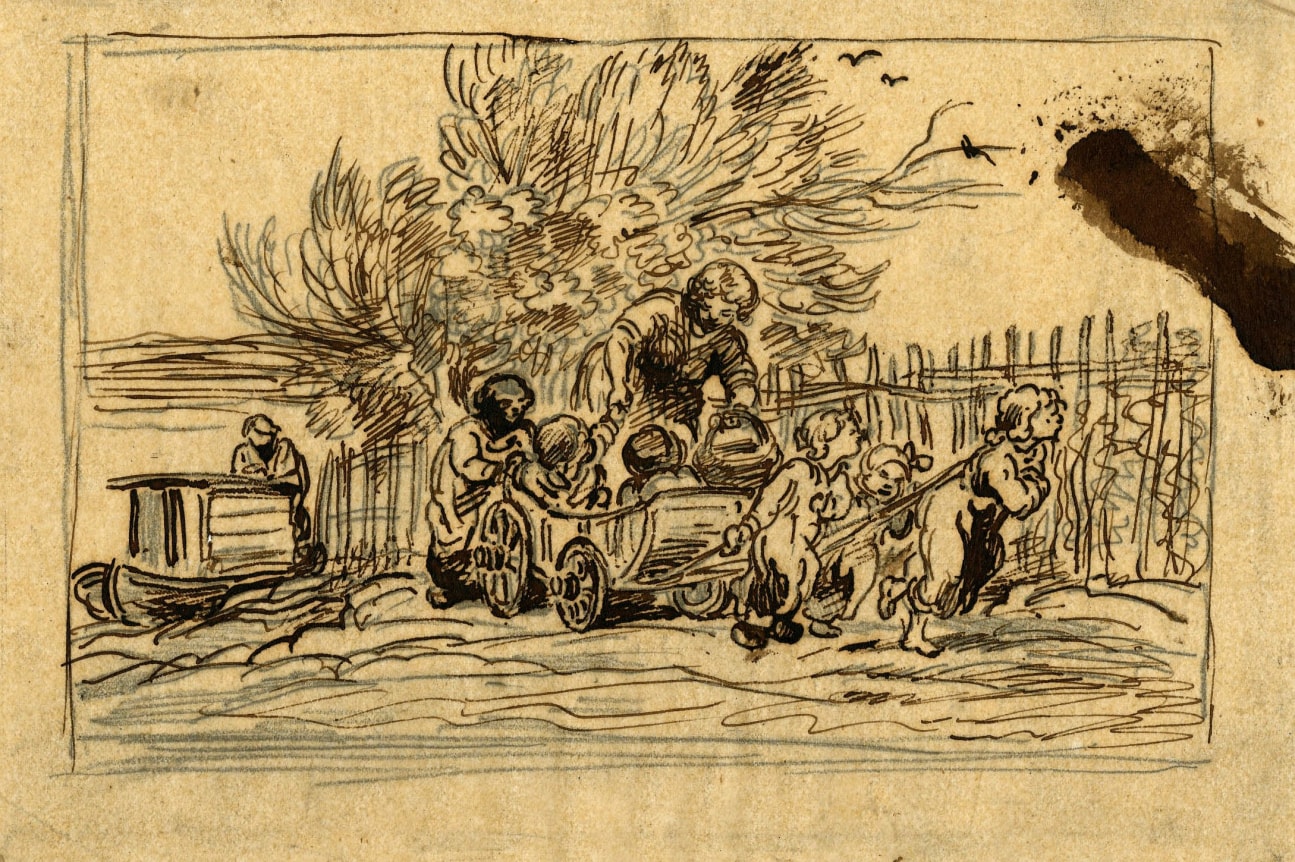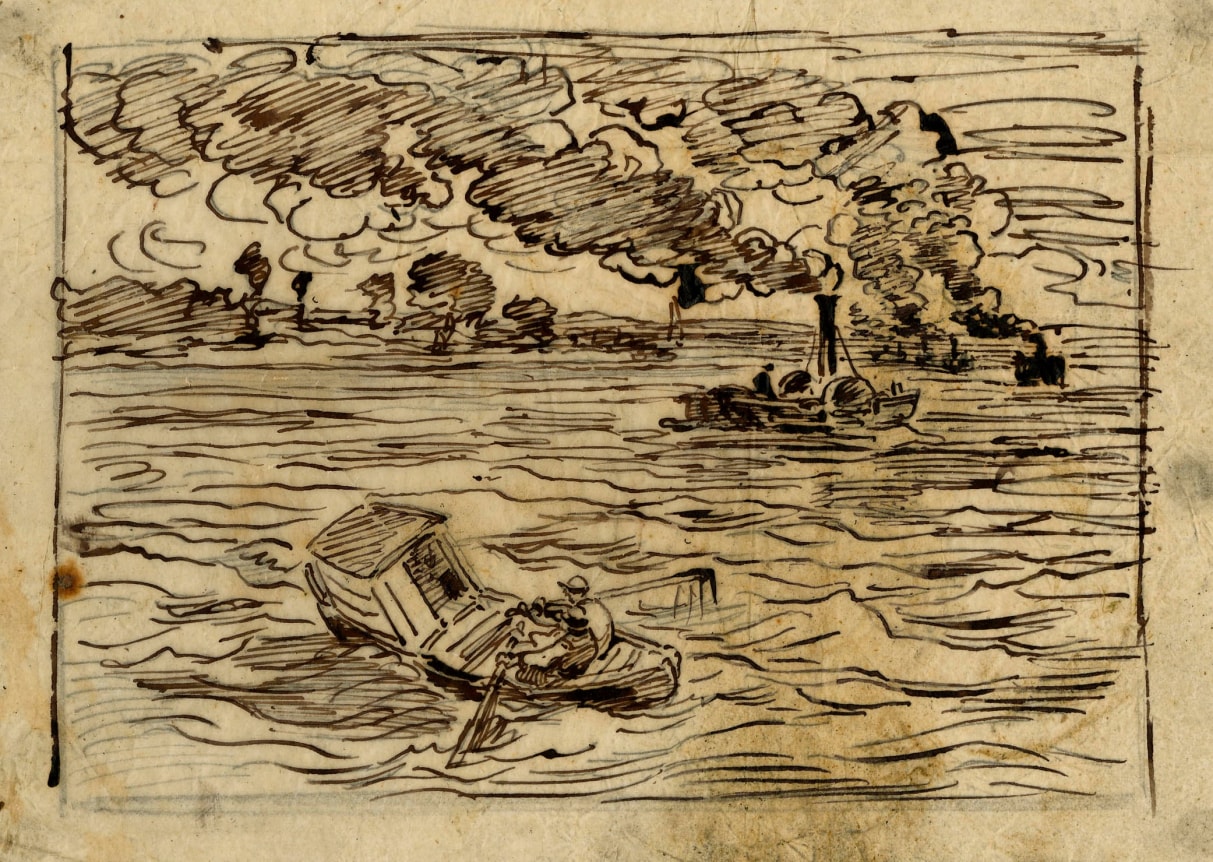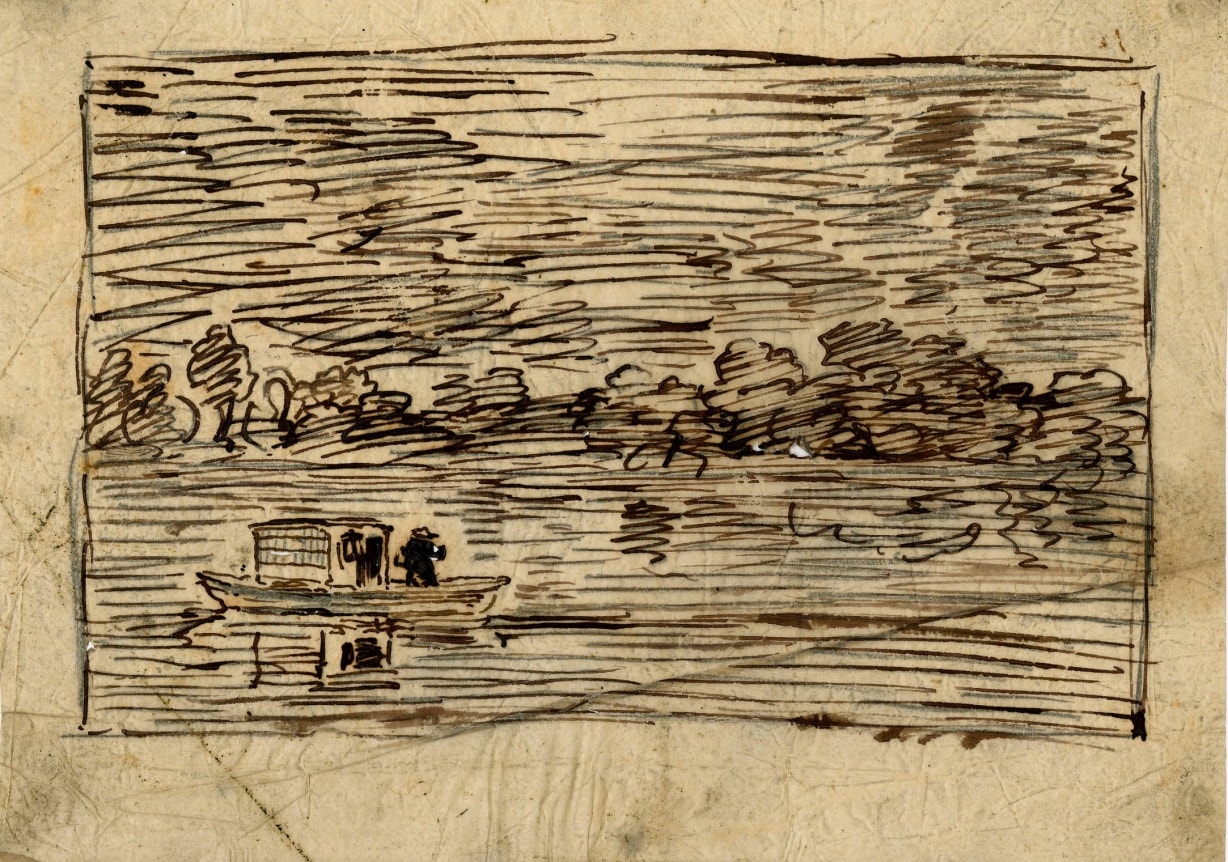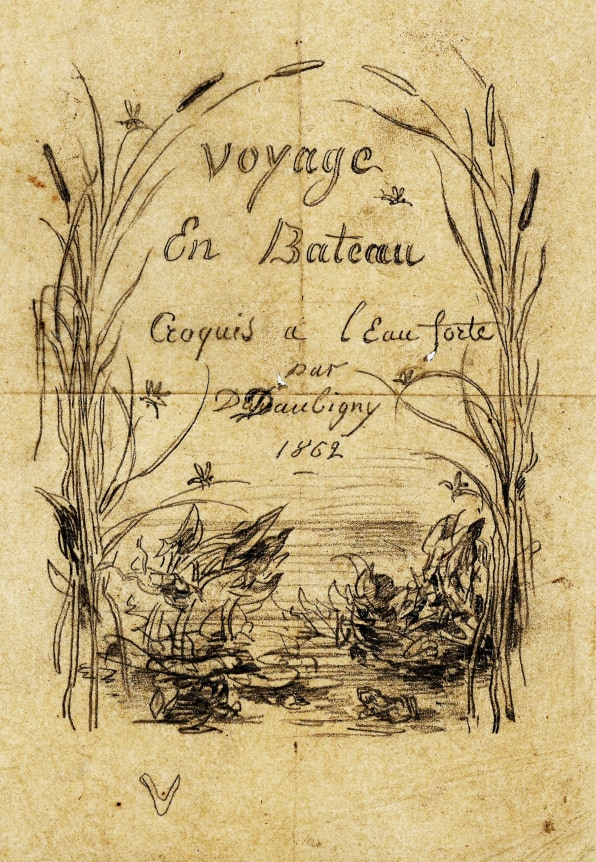During Master Drawings in New York week and continuing through February, Jill Newhouse Gallery will present a previously unpublished group of 31 drawings by Charles François Daubigny (1817-78), 23 of which are for his important print series Voyage en Bateau.
Best known as an engraver until his career as a painter began to flourish in the 1850s, Daubigny created some of the most beautiful landscapes of the late 19th century. A member of the Barbizon school of painters whose work is often considered a precursor to Impressionism, Daubigny is an artist whose work combines elements of the art of the 17th century Dutch Masters he studied and copied, the 19th century landscapists Corot and Millet with whom he worked and lived, and the Impressionists who derived their spontaneous technique and vivid sense of place from these earlier masters.
Known for his painted views of the riverbanks and coastlines of France, Daubigny survived for many years as a graphic artist, illustrating books, magazines and travel guides for publication. These 31 drawings, exhibited here for the first time, range in date from 1849 to 1875. They have been kept together as a group since the 19th century and descended in the family of Maurice LeGarrec, partner in the eminent gallery Sagot LeGarrec in Paris.
Created in a period when the reproduction of artworks was a manual task, these drawings can be defined as transfer drawings, meant to be used to transfer the image of a painting or drawing either to an etching plate, a woodcut, or to make reproductive illustrations. As such, they are truly working drawings, and show us the vigor, skill and inventiveness of the artists draughtsmanship.
The mid 19th century was a pivotal period in the development of the graphic arts in France. While the first half of the century was dominated by the invention of lithography and the spread of commercial and reproductive print making, by 1860 many artists began to return to etching as the more creative medium. Artists sought to redefine themselves as painter-printmakers, and were more attracted to etching and to methods of printmaking based on Old Master techniques. Known as the Etching Revival, this movement was supported early on by the publisher Alfred Cadart (18281875) who in 1862 formed an official society called the Société des Aquafortistes, intended to promote etching to fellow artists as well as to the general public. Cadart gave the market for etching an international scope by bringing etchings and materials for making etchings, as well as contemporary French painting, to the United States. He helped to establish etching schools in New York City, Boston and Philadelphia. Cadart published numerous albums of prints which he marketed and sold in an effort to promote his cause. Among these was C.F. Daubignys album published in 1862 called Le Voyage en Bateau, croquis à leau forte.
These rare drawings give us an unusual insight into the creative working methods of an important mid-19th century French landscape painter.


